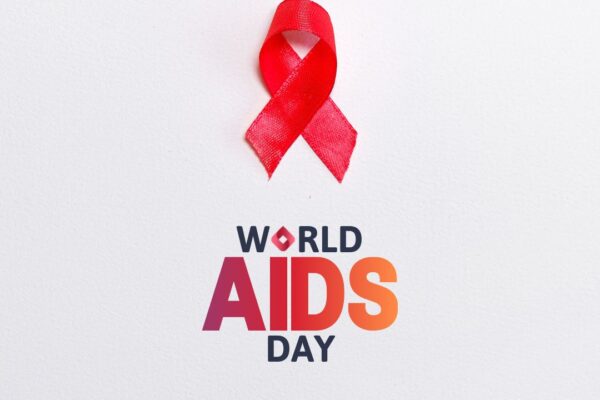HIV – World Health Organization (WHO)

Global Progress on HIV/AIDS in the Context of Sustainable Development Goals
Current Status of the HIV Epidemic (2024 Data)
- HIV persists as a significant global public health challenge, particularly impacting progress towards SDG 10 (Reduced Inequalities) in low- and middle-income nations.
- An estimated 40.8 million individuals were living with HIV globally in 2024.
- Of this total, 31.6 million people were receiving essential treatment.
Advancements in Treatment and Alignment with SDG 3
- The widespread availability of antiretroviral therapy (ART) is a cornerstone of the strategy to achieve SDG Target 3.3 (End the AIDS epidemic by 2030).
- Globally, 77% of people living with HIV were receiving ART in 2024.
- Benefits of ART directly contribute to SDG 3 (Good Health and Well-being) by:
- Enabling people with HIV to live longer, healthier lives.
- Preventing the onward transmission of the virus, a critical component of ending the epidemic.
Maternal Health and Prevention of Mother-to-Child Transmission
- Sustained efforts to prevent mother-to-child transmission are crucial for achieving targets within both SDG 3 (Good Health and Well-being) and SDG 5 (Gender Equality).
- In 2024, a significant milestone was reached with 84% of pregnant women living with HIV (approximately 1.1 million women) receiving antiretrovirals (ARVs).
- This intervention is vital for keeping mothers alive and preventing new infections in infants, contributing directly to the global health agenda.
1. Which SDGs are addressed or connected to the issues highlighted in the article?
-
SDG 3: Good Health and Well-being
The article directly addresses public health, focusing on HIV as a “significant public health challenge.” It discusses treatment, prevention, and health outcomes for people living with HIV, which are central themes of SDG 3, aimed at ensuring healthy lives and promoting well-being for all at all ages.
2. What specific targets under those SDGs can be identified based on the article’s content?
-
Target 3.3: By 2030, end the epidemics of AIDS, tuberculosis, malaria and neglected tropical diseases and combat hepatitis, water-borne diseases and other communicable diseases.
The article’s entire focus is on HIV/AIDS. It discusses measures critical to ending the epidemic, such as providing antiretroviral therapy (ART) which “prevents onward transmission of HIV” and specific “efforts to prevent and eliminate mother-to-child transmission.” These actions are fundamental to achieving Target 3.3.
-
Target 3.8: Achieve universal health coverage, including financial risk protection, access to quality essential health-care services and access to safe, effective, quality and affordable essential medicines and vaccines for all.
The article highlights the importance of “access to antiretroviral therapy (ART).” The data provided, such as “31.6 million people were receiving HIV treatment in 2024,” directly relates to the provision of essential medicines and healthcare services, which is a core component of universal health coverage as described in Target 3.8.
3. Are there any indicators mentioned or implied in the article that can be used to measure progress towards the identified targets?
-
Indicator for Target 3.3: Proportion of people living with HIV receiving antiretroviral therapy.
The article provides precise data for this indicator. It states, “Globally, 77% of the 40.8 million people living with HIV in 2024 were receiving ART.” This directly measures the reach of treatment programs aimed at ending the AIDS epidemic.
-
Indicator for Target 3.3: Proportion of pregnant women living with HIV receiving antiretrovirals.
The article explicitly measures this by stating, “In 2024, 84% of all pregnant women living with HIV, or 1.1 million women, received antiretrovirals (ARVs).” This is a key indicator for progress in eliminating mother-to-child transmission.
-
Indicator for Target 3.8: Coverage of essential health services.
The statistics on treatment coverage serve as a direct measure for this indicator. The figures “77% of the 40.8 million people living with HIV… were receiving ART” and “84% of all pregnant women living with HIV… received antiretrovirals” quantify the coverage of essential HIV-related health services for affected populations.
4. Table of SDGs, Targets, and Indicators
| SDGs | Targets | Indicators |
|---|---|---|
| SDG 3: Good Health and Well-being | 3.3: By 2030, end the epidemics of AIDS… |
|
| SDG 3: Good Health and Well-being | 3.8: Achieve universal health coverage, including access to quality essential health-care services and… essential medicines… |
|
Source: who.int

What is Your Reaction?
 Like
0
Like
0
 Dislike
0
Dislike
0
 Love
0
Love
0
 Funny
0
Funny
0
 Angry
0
Angry
0
 Sad
0
Sad
0
 Wow
0
Wow
0
































































.jpg?#)








